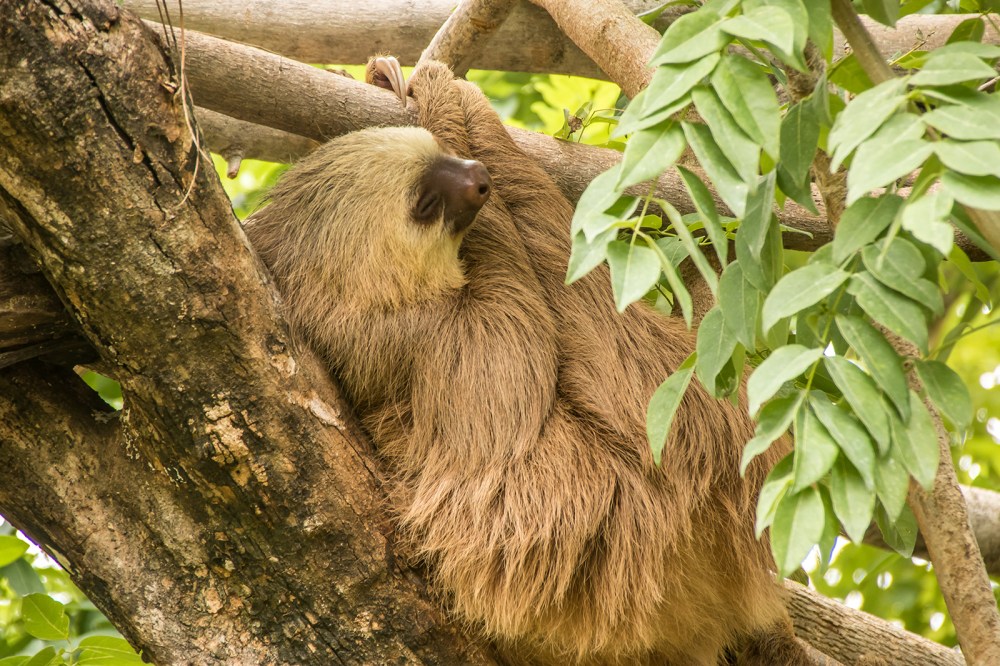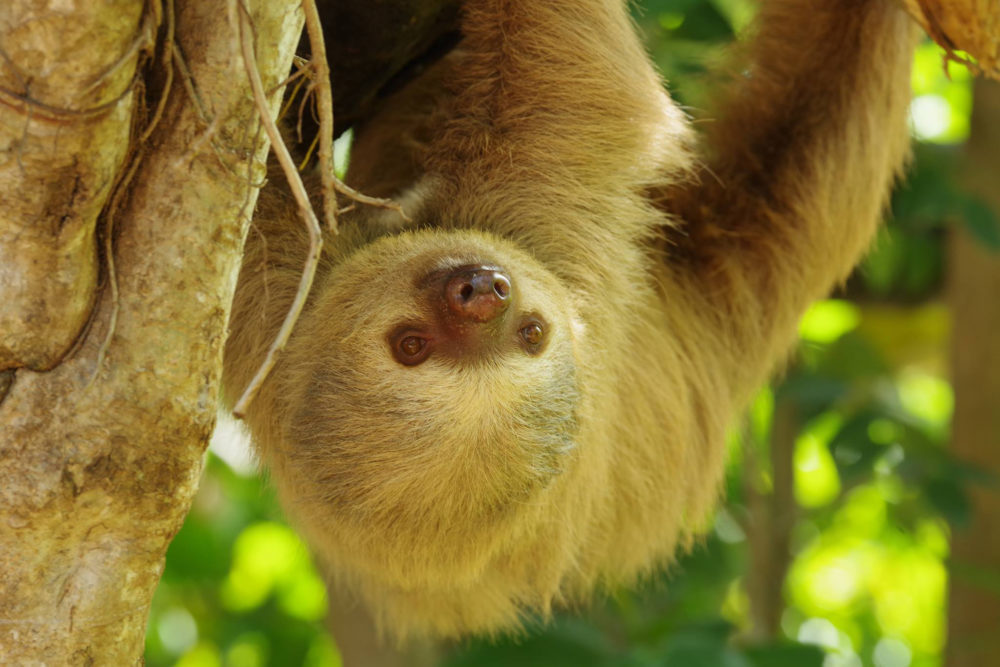Sloths in Costa Rica

If you’re visiting Costa Rica and are interested in seeing a sloth, you’re in the right place.
These cute and cuddly animals are trendy because of media awareness about their slow-moving lifestyle. Sloths are plentiful in Costa Rica but aren’t always easy to spot with the untrained eye. Even for those seeking Adventure tours.

Lucy sleeping
There are many places for “Sloth Sightings” in Costa Rica. Several national parks have sloths, but many people elect to visit animal sanctuaries like Diamante Eco Adventure Park located in Guanacaste, located between Playas del Coco and Tamarindo, right next to RIU hotel. Please make sure ICT, CST, and MINAE certify any animal rescue center you visit.
Diamante works closely with Costa Rica’s Ministry of Environmental and Energy (MINAE), who is responsible for all rescue animals in Costa Rica. They also have dedicated animal specialists, nutritionists, and veterinarians on site. Diamante Eco Adventure Park’s sloth habitat is open, easy to see, and allows for up-close viewing without disturbing the sloths. Make sure to ask about Lucy.
Sloths are very delicate creatures due to their slow metabolism.

Here are a few tidbits that make sloths both intriguing and mysterious:
- They appear to be very lazy. They do practically nothing but sleep and eat. Studies show that they require almost two weeks to digest a meal fully. They’ve evolved to do less, rather than to eat more. This is the main reason for their 20-hour naps. Sloths sleep up to 23 hours a day and only wake up to eat and move to find more to eat.
- Their food consists mostly of branches, leaves (their favorite ones are the of the cecropia trees), buds, and sometimes different insects.
- They are not predators, and almost in the same way, they have few predators. Sloth’s main dangers are the wildcats and eagles. However, their color gives them excellent camouflage, making them challenging to find.
- The Costa Rican sloths are not in danger, but other species such as the Brazilian and the Pygmy sloth of neighbor country, Panama, are endangered.
- There are six types of sloths in the world, and Costa Rica is home to two species, the two-toed, and the three-toed. Two-toed are nocturnal, and three-toed are diurnal (meaning they are awake in the daytime).
- Sloths have babies that stay on their backs for up to 9 months. Baby sloths are by far one of the cutest animals on the planet!

- Sloths eat hanging upside down. The enzymes in their stomachs work better in this position to digest their food.
- Despite its laziness, the sloths are fantastic swimmers.
- The sloths are related to armadillos and anteaters.
- The wild sloth can live up to 12 years.
- Believe it or not, the sloths risk their lives to poop. Once a week, they descend to poop, and here it is when they risk their lives, as being exposed in the ground. The reason why they do that is still a mystery for biologists.
- Their fur works as an ecosystem as it supports different colonies of algae and moths.
- It can take up to 30 days to completely digest one leaf, and they never eat too many leaves from the same tree to avoid poisoning themselves.
- The fungus in their fur can cure cancer, according to recent investigations.

When traveling to Costa Rica, make sure to have “sloth sighting” on your “must-do” list for activities in Costa Rica. You’ll be fascinated with their unique lifestyle and smiling faces. Pura Vida!
